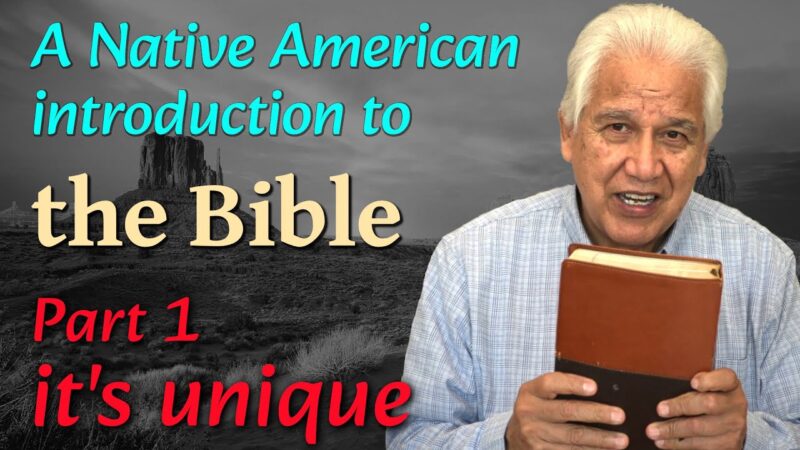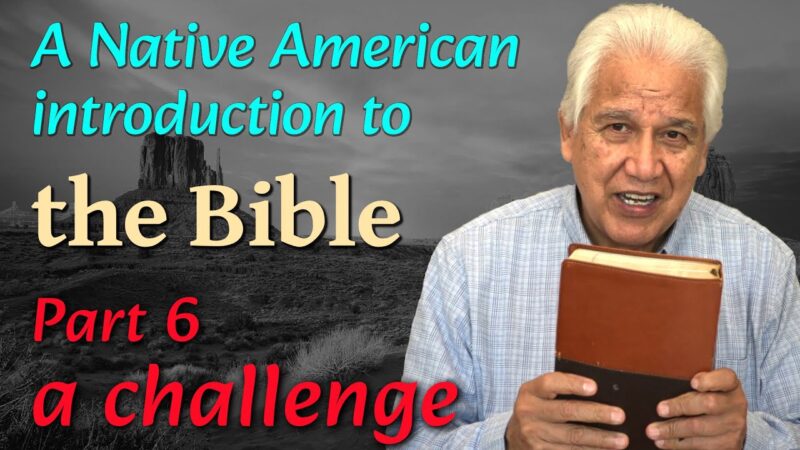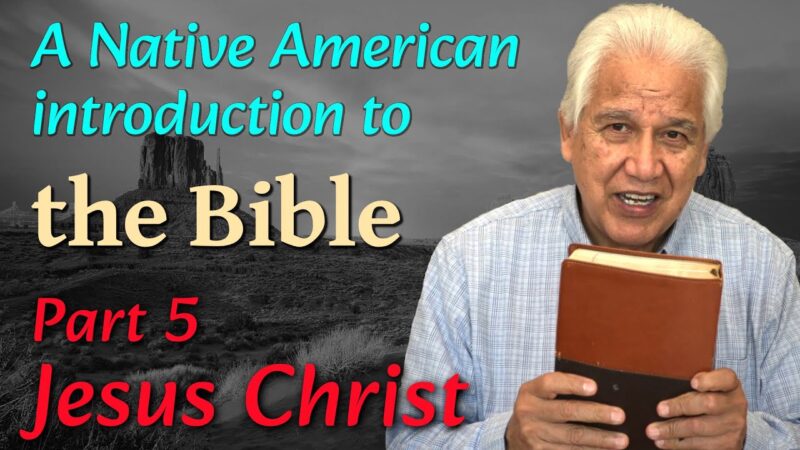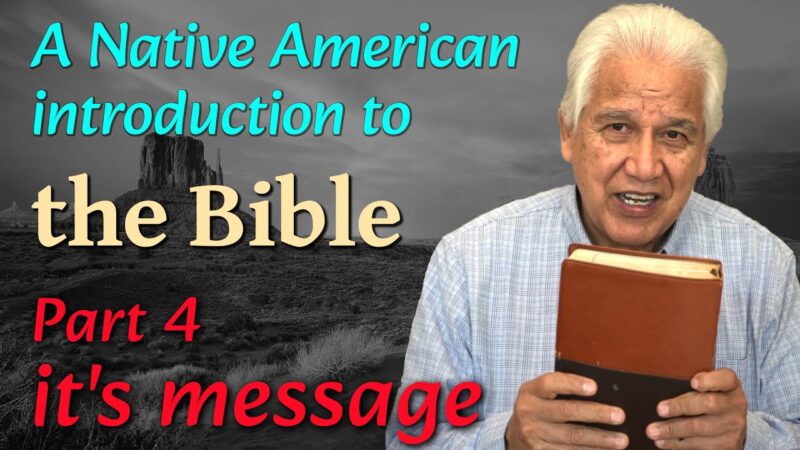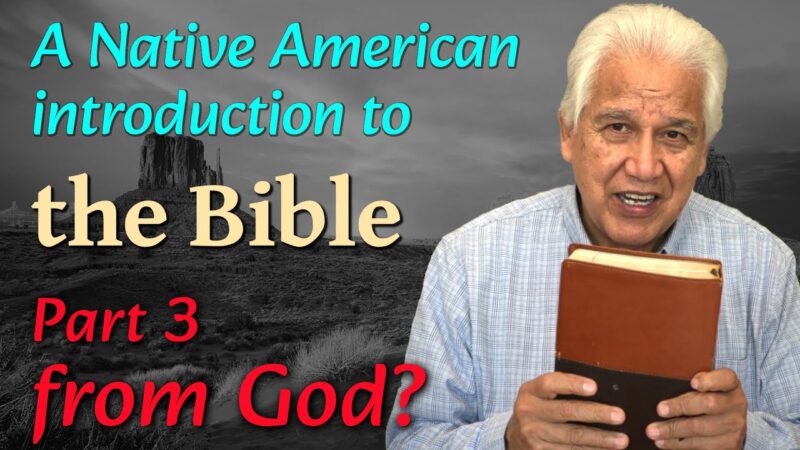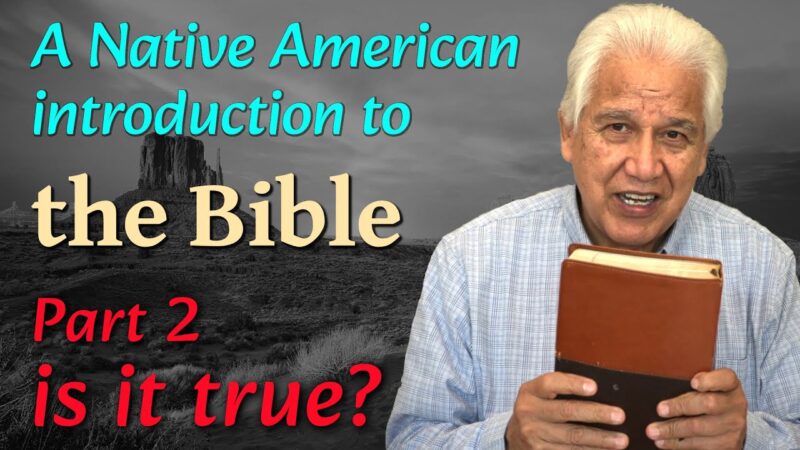Native American Bible Introduction, It’s Origin, Message, and More. Part 1 – It’s Unique
Native American – First Nations Introduction to the Bible: It’s Unique.
🍃 Watch the series by Mescalero Apache, Soapy Dollar, here: https://www.youtube.com/playlist?list=PLm4Y5qad3GcTF3swbs_1mvaD-E-ty_UdV
This Bible Intro series for Native American, First Nation, and Indigenous people is taught by a Native American – Mescalero Apache, Soapy Dollar. He talks about the origin of the Bible, it’s message, and more. He also shares about the central character of the Bible, Jesus Christ.
As you’ll discover, Soapy is both very familiar and passionate with what he calls, the Book of books, the Bible. This series is intended to be an introduction to the Bible. It doesn’t dive deep, but hopefully, it will cause you to want to explore more. If you’re skeptical or have doubts, we hope that you’ll consider with an open heart what is shared.
Common questions and issues addressed in this series:
What’s so special or unique about the Bible?
Is the Bible true?
Where did the Bible come from?
Is the Bible really from God?
Is the Bible accurate?
What is the message of the Bible?
Who is Jesus Christ?
Is the Bible for First Nations and Native American people?
Why read the Bible?
There are many who have misconceptions and concerns about the Bible. Some dismiss it. Others have found hope and lasting peace with God through it, including many Native and First Nations people among the tribes of North America and throughout the world.
What is it about this book that makes it so popular or unpopular? Why is so loved and so hated? Does it really address the purpose and meaning of life as some claim?
The purpose of this video, is to inform native people and native communities about this book called The Bible.
Part 1: The Bible is Unique. It should not surprise us if it truly is given to us by inspiration from God, which is what it claims in 2 Timothy 3:16. It’s uniqueness attests to the truth that, no matter what one thinks of it, it is no ordinary book.
Key Points in Part 1:
– We think of the Bible as one book, but in reality it’s 66 different books written over a period of over 1500 years, by 40 different authors, in times of peace, times of war, times of plenty, times of famine, all kinds of situations.
– And yet, in all these different situations and circumstances the Bible is unique in its consistency, in its message. It speaks to hundreds of different complex and even controversial topics within the human beings experience with a perfect consistency throughout, from beginning to end.
– It has circulated from people group to people group, through the centuries, from generation to generation.
– It is by far the most translated book, the most translated text in all of human history. The full Bible has been translated into at least 704 languages, the New testament in over 1,500, languages, and other portions of the Bible in another 1160+ languages.
– There have been many attacks and many predictions that the Bible would be eradicated, eliminated, erased from human experience. And yet it still stands today, stronger and greater than ever before in its influence, expanding to all the nations, all the languages of the world.
– It speaks with great clarity to the human condition and addresses the questions in life that are common to all people.
– The overall topic is that there is a Redeemer, there is a Savior, there is one who comes to reconcile fallen humanity and reconcile us to a holy and gracious, loving God. Its message is unique in that it tells us God loves us, seeks us, and that He has spoken and acted in human history so that we might know Him and come into a relationship with Him.
—–
Outline for following along in the video series (Each part is a video):
Part 1 – Introduction and The Bible is Unique
It is Unique
– In it’s consistency
– In it’s circulation
– In it’s translation
– In it’s survival
– In it’s teaching
– In it’s message
Part 2 – The Bible is True and Accurate
Tests and Evidence
– The Bibliographical test
– The Internal test
– The External test
– Archeology
Part 3 – Is the Bible from God our Creator?
Why do we think this?
– It’s amazing consistency
– It has a “ring of truth”
– Fulfilled predictions and prophecies
– The life of Jesus
– Transformed lives
Part 4 – The Message of the Bible
The Central Message of the Bible
– God loves and cares for us
– We are sinful, selfish, guilty, and condemned
– God sends a Savior
– We must respond in faith
Part 5 – The Central Character – Jesus Christ
Jesus Christ is the central character of the Bible
– His person and redemptive work is foretold in the Old Testament
– His person and redemptive work is fulfilled in the New Testament
Part 6 – Final Thoughts and a Challenge
Brief Summary
– God has gone to great lengths to communicate with us
– Pick up the Bible and read it for yourself
—–
Listen to Soapy’s personal story: https://www.youtube.com/watch?v=GHD0Av50Hss
Visit our website: www.withoutreservation.com

